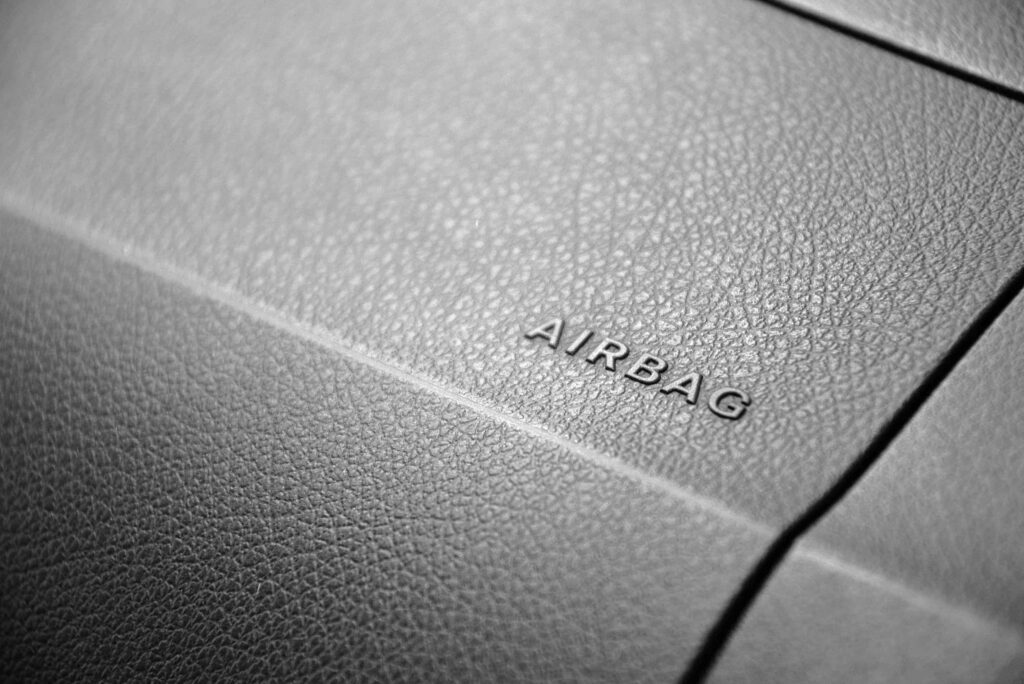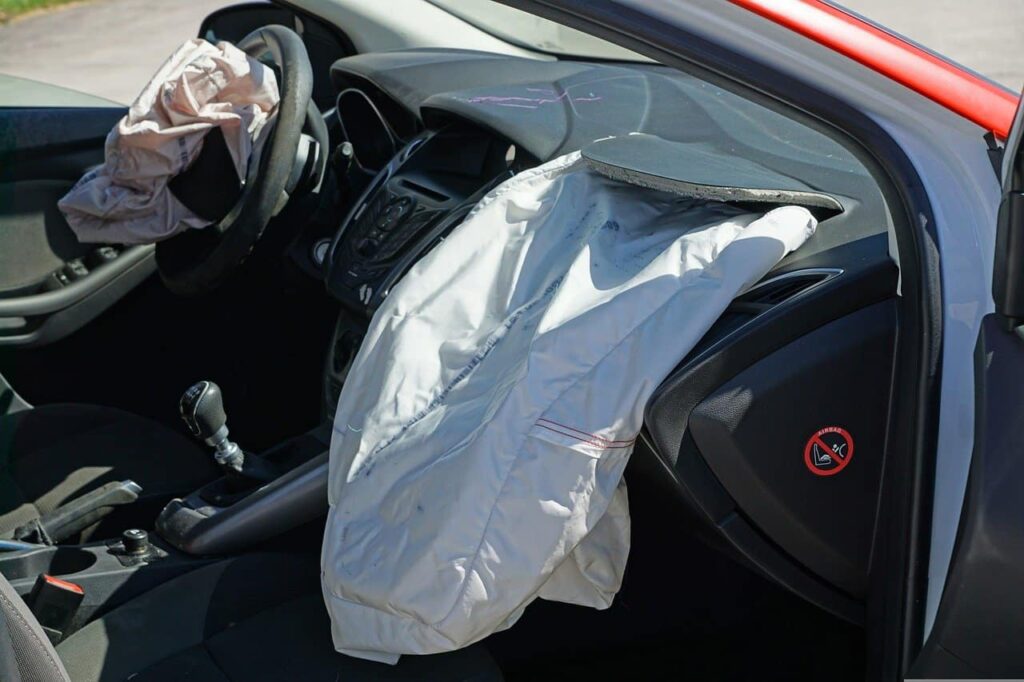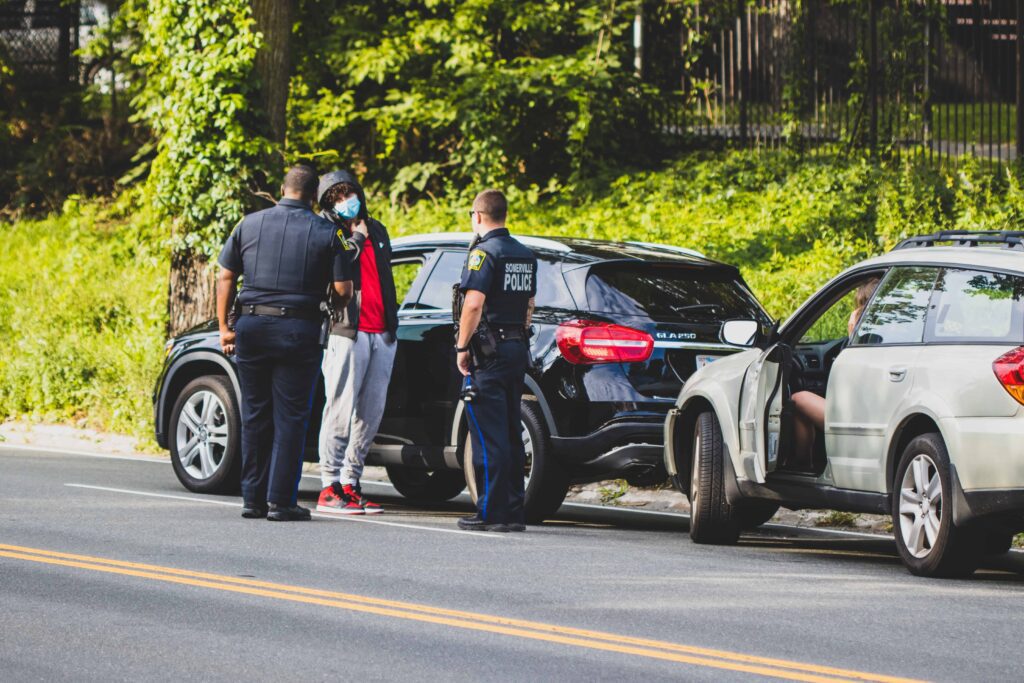
You assume that safety features in your car will work as predicted whenever they’re needed. In the case of airbags, that might not be true. In fact, in 2021, an estimated 14 million cars in the US alone had faulty airbags manufactured by Takata. These airbags can be found in many makes and models of vehicles, including Honda, Toyota, Ford, and Nissan. Beginning in 2015, Takata started a widespread recall of nearly 34 million affected vehicles, but many of these remain on the road.
For Takata airbags, the issue involved faulty inflator mechanisms. These defective devices caused airbags to deploy with excessive force, sending shards of the metal canister into the car’s passenger compartment. This is an example of one way, but certainly not the only way, an airbag can fail a driver and passengers. Other ways airbags can fail include deploying unnecessarily, deploying too slowly, or not deploying at all.
Per the NHTSA, airbags have saved nearly 50,500 lives. But where do you turn when your airbag fails? If your airbag didn’t deploy, who is at fault?
Airbag deployment
Airbags have been standard in all passenger cars manufactured from 1998 to the present. In larger vehicles, such as vans, pickup trucks, and SUVs, this safety equipment became standard in 1998. This means that all new vehicles have at least frontal airbags, and many also offer side airbag protections as well. Unfortunately, these protections don’t always guarantee safety in a crash.
How does an airbag work?
Airbags are hidden behind special break-away panels marked SRS (or Standard Restraint System). Airbags have an electronic control unit that senses a crash and sends a signal to an inflator inside the device. This signal immediately triggers an ignitor which initiates a chemical reaction. This reaction produces a harmless gas, causing the airbag to deploy. As it deploys, it breaks through its panel and fills the passenger compartment of your car.
How fast do airbags deploy?
According to studies, airbags deploy within 55 milliseconds, quite literally the blink of an eye. It’s estimated the airbag travels at 200 miles per hour as it deploys. Once deployed, the airbag quickly deflates on its own.

Airbag Injuries
With speeds of 200 miles per hour on deployment, the airbag can cause injuries to the occupants of the car. The most common airbag injuries include:
- Abrasions and lacerations
- Bruising
- Bone breaks and fractures
- Lung irritation
- Sprained fingers or wrists
- Whiplash
- Facial injury
- Burns to face, neck, and arms
If you suffer from the latter, it is crucial to consult with an Indianapolis burns to face, neck, and arms attorney who can guide you through the process of seeking compensation for such specific and severe injuries. These legal professionals are adept at handling the delicate nature of these cases and can provide the necessary support to ensure just reparation.
How can an airbag cause injury?
The largest percentage of airbag injuries are caused by occupants not sitting properly in the vehicle. This includes sitting too closely to the steering wheel, not wearing a seatbelt, improper tilting of the steering wheel, passengers placing feet on the dashboard while the vehicle is in motion, and improper hand positioning on the steering wheel.
Additionally, airbags can be accidentally turned off or, in the case of a small child, left on. Rear-facing child seats placed in the passenger seat can also result in serious injury. It’s why it’s useful to know that you can file a personal injury lawsuit in Merrillville, for example, and know that you are not alone in your fight to gain justice for yourself and your child.
Seatbelts increase airbag safety
There are ways to protect yourself from airbag injuries during a crash. The most important way is to make sure you use a seatbelt.
Airbags are designed to be part of a total safety feature package, including seatbelts. While airbags will deploy whether you are wearing a seatbelt or not, they are not enough to protect the vehicle’s occupants during a crash.
Not wearing a seatbelt when your airbag deploys can cause injury in several ways:
- Occupants can still be ejected from the vehicle
- Occupants will be forced forward and into the path of the deploying airbag
- Occupants will not be restrained from impact with other parts of the car or each other
My airbags didn’t deploy: Who’s responsible?
Properly working airbags save thousands of lives per year. Unfortunately, airbags don’t always work as they should. When airbags fail to deploy as expected, they do nothing to reduce potential injuries in a vehicle accident. If they deploy after the crash, they will increase your potential for a significant injury.
Why didn’t my airbags deploy?
Airbags are designed to deploy under very specific conditions. Some reasons they may fail include:
- The impact from the crash wasn’t enough to trigger the sensor: Airbags are designed to deploy during moderate to severe impacts, not low speed or minor accidents.
- The airbags were turned off: Advanced airbags are designed to shut off automatically if a smaller person, such as a child, is in the passenger seat. You can also manually turn off the airbags to reduce potential airbag injuries to smaller passengers. Forgetting to turn them back on will interrupt the automatic operation of the airbags.
- The airbag wasn’t replaced after a previous accident: Airbags must be replaced after a deployment. If you’ve been involved in an accident or you’ve purchased a used vehicle, it’s imperative to ensure airbags are replaced and in good working order.
- The airbag is faulty: Some vehicles were equipped with faulty airbag systems. If you’ve received a recall notice, it’s important to take your vehicle in for airbag replacement.
- Malfunctioning sensors and electrical components: Proper deployment of an airbag depends entirely on the accuracy and functionality of the sensors, electrical components, and wiring of the device.
- Improper installation: If the vehicle was involved in a previous crash, the airbags should have been replaced. A failure to deploy could be the result of an improperly installed replacement of the device.
Most vehicles have an airbag warning light. If you notice this light is on, it means a problem was detected with the safety feature. Have the airbag assessed immediately by a trained professional as soon as you notice the warning light.
Who is responsible if my airbag didn’t deploy?
If you were injured because of a faulty airbag, you can file a personal injury lawsuit for a defective product. Regardless of whether your car is new or used, several entities can be held liable, after an investigation, for injuries resulting from an airbag malfunction.
- The manufacturer of the airbag parts and sensors
- The entity that installed the airbag
- The distributor that delivered the car to a dealership
- The airbag manufacturer
- The vehicle manufacturer
- The car dealership that sold the car
What steps should I take if my airbag didn’t deploy?
If you’re involved in a vehicle accident and your airbags didn’t deploy, it’s important to document the details of the incident as accurately as you can.
- Tell the responding law enforcement officer of the failure to deploy so it can be noted on the report. Your accident report will contain the items necessary to move forward with an investigation, including your speed at the time of impact.
- Take photos of all vehicles or stationary objects involved in the crash to help ascertain if the airbag should have been deployed.
- Seek a medical evaluation of your injuries for documentation and treatment. These records may help prove that your injuries would have been reduced if the airbag had been deployed.
- Seek an experienced personal injury attorney who has expertise in defective product liability.

Why Do I Need An Attorney if My Airbag Didn’t Deploy?
It’s nearly impossible to prove defective product liability on your own. Several things need to be proven for the case to be won:
- There is no reason to suspect the airbag wouldn’t deploy.
- The airbag failed to deploy when it should have.
- The reason the airbag didn’t deploy was that it was defective in some way.
- Your injuries could have been less severe if the airbag had deployed properly.
An experienced attorney will help gather the facts in your case, identify the liable party, and fight to win fair compensation for your injuries. This compensation could include emotional distress, pain and suffering, medical costs, and lost wages. Even if you’re not certain you have a case, always contact an attorney to be sure.







